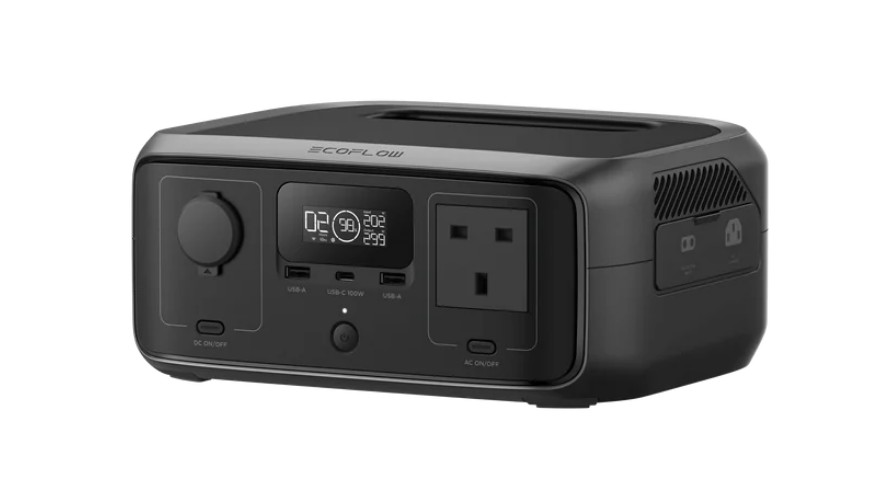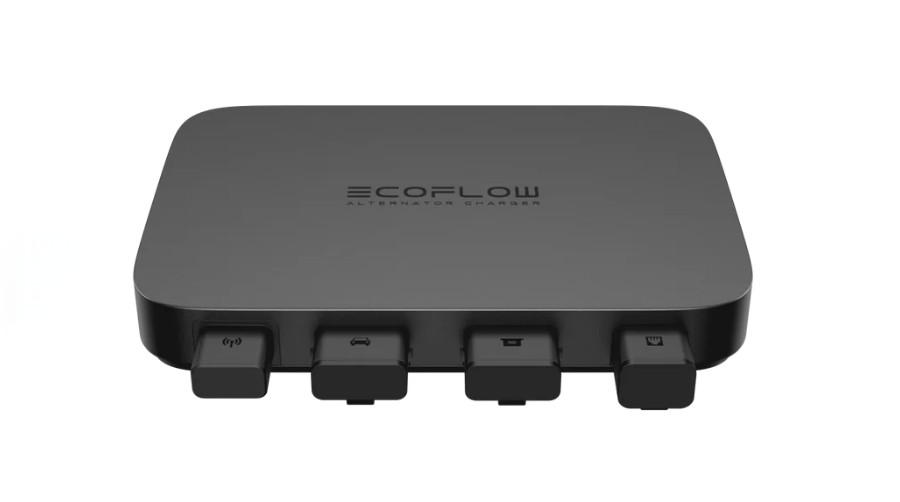How to Charge A Leisure Battery: A Beginner’s Guide
A leisure battery provides sustained power for appliances and lighting for campervans, boats, and off-grid setups. Knowing how to charge a leisure battery efficiently is necessary for long-term performance. This guide covers everything a beginner should know about charging a leisure battery properly. You will learn various charging techniques, estimated charging times, and safety tips to prevent damage and maintain efficiency. Read on to keep your power flowing.
How to Charge a Leisure Battery?
Wondering how to keep your leisure battery topped up for those weekend getaways or off-grid escapes? It’s easier than you might think. Here’s a simple breakdown of how to charge a leisure battery and keep your power flowing on your road trips.
Connect to Mains Power
If you want to charge a leisure battery at home, connecting to mains power is a reliable method. The whole process is straightforward. You connect the leisure battery to a standard household outlet with a compatible charger. To avoid overcharging, please monitor the charging process whenever possible.
Use a Split Charge Relay
A split charge relay is a handy solution for charging your leisure battery while your vehicle is running. It works by allowing your vehicle’s alternator to charge the starter battery first, then automatically diverting excess power to the leisure battery once the starter is full. This setup is great for campervans, RVs, and motorhomes because it charges on the move without any manual switching. Just make sure your system is properly installed and compatible with your vehicle’s electrical system, especially if it uses a smart alternator.
Charge with Solar Panels
If you're off-grid or simply want a more sustainable way to recharge, solar panels are a great option for topping up your leisure battery. With the right setup, you can convert sunlight into usable power anytime you're parked under the sun. All you need is a solar charge controller and compatible panels to safely direct the energy into your leisure battery. It’s an excellent choice for campervans and caravans, letting you stay powered up without relying on campsite hookups or fuel. Plus, it’s silent, low-maintenance, and eco-friendly, perfect for longer stays in nature.
Charge with Generators
Using a generator is another way to charge a leisure battery, especially when you're away from mains power. While it's similar to using a household socket, it's not ideal to connect the battery directly to the generator, as many models don’t provide stable voltage. To avoid damage, it's best to connect your battery through its original charger plugged into the generator’s AC output for a regulated power supply. Alternatively, a portable power station like the EcoFlow RIVER 3 Portable Power Station offers a safer and more convenient solution. As part of a solar generator setup, it delivers clean AC power and can fast-charge your battery using X-Boost technology.


How Long Does It Take to Charge a Leisure Battery?
The time it takes to charge a leisure battery varies significantly based on several factors. For instance, it takes a longer time to charge a deeply discharged leisure battery under cold temperatures. Below are some common factors to consider.
Battery Capacity (Ah): Larger batteries require more time to charge. For instance, it takes approximately 10 hours to charge a 100Ah battery with a 10A charger in optimal efficiency.
Charger Output (Amps): Higher amperage chargers reduce charging time. Theoretically, a 20A charger can halve the charging duration compared to a 10A charger.
Battery Type: Lithium batteries generally charge faster than lead-acid ones due to higher charge acceptance rates.
Charging Method: The charging method also greatly influences the charging time. For example, a mains hookup offers consistent power, making charging faster.
Can You Charge Your Leisure Battery While Driving?
Yes, you can charge your leisure battery while driving, and it's actually one of the most efficient ways to keep it powered on the go. The most common method is using a split charge relay or DC-DC charger, which allows your vehicle’s alternator to send power to the leisure battery while the engine is running. It automatically separates the starter battery from the leisure battery when the engine is off, preventing any unwanted drain.
Newer vehicles with smart alternators may require a DC-DC charger to ensure stable voltage and reliable charging. Another option is using an alternator charger like the EcoFlow 800W Alternator Charger, which captures excess energy from the vehicle and charges your power station or leisure battery faster and more efficiently. The installation is pretty easy, without leaving any marks. Whether you have an SUV, pickup, or RV, it works seamlessly.


How to Know When Your Leisure Battery Needs Charging?
You'll typically notice your leisure battery needs charging through the onboard battery control panel or the performance of several appliances. You can also check manually or observe if frequent recharging is required.
Voltage Reading: If your caravan or boat has a built-in battery monitor, it will likely show a lower voltage reading. A reading below 12.2V generally indicates a significant discharge. Some advanced battery monitors might also have low-voltage alarms or indicators.
Diminished Performance: Lights may appear dimmer than usual, and appliances might run slower or less efficiently. Some appliances may simply stop working if the voltage drops too low.
Frequent Recharging Needs: If you find yourself needing to charge the battery more often than usual for the same usage, it's a sign that it's not holding its charge well and likely needs a top-up.
Manual Check: With all loads off, you can also use a voltmeter or multimeter to check the voltage directly at the battery terminals.
Safety Tips When Charging a Leisure Battery
When charging a leisure battery, safety should be your top priority. Here are some crucial tips.
Read the Manuals: Always consult and follow the instruction manuals for both your leisure battery and your charger. They contain specific safety guidelines and charging recommendations.
Use the Correct Charger: Using the wrong charger can damage the battery or create a safety hazard. Always employ a charger specifically designed for leisure batteries. Also, ensure it matches the battery's voltage and type (e.g., AGM, GEL, lead-acid).
Inspect Cables and Connections: Ensure the connections to the battery terminals are clean and secure. Before charging, examine the charger's cables and connectors for any signs of damage, such as frayed wires or loose connections.
Connect with Correct Polarity: Reverse polarity can cause damage to both the battery and the charger. Double-check that you are connecting the positive (+) terminal of the charger to the positive (+) terminal of the battery and the negative (-) terminal to the negative (-) terminal.
Ensure Proper Ventilation: Charging batteries can produce flammable gases (hydrogen). Always charge in a well-ventilated area to prevent a buildup of these gases, which could lead to an explosion.
Avoid Charging Near Flammable Materials: Keep the battery and charger away from flammable liquids, gases, or other combustible materials during the charging process. Also, never smoke or have open flames nearby.
Monitor the Charging Process: While smart chargers have automatic shut-off features, it's still a good practice to periodically check on the charging process, especially if you're using a simpler charger. Be aware of any unusual smells, excessive heat, or hissing sounds coming from the battery and take action immediately for any coincidence.
Conclusion
Mastering how to charge a leisure battery is key to enjoying uninterrupted power on your travels. There are various methods. Each comes with its own advantages, from the convenience of mains hook-ups to the sustainable energy of solar panels and the on-the-go charging via split charge relays. By understanding these techniques, recognizing when a charge is necessary, and adhering to safety guidelines, you can confidently maintain a reliable power source for all your leisure pursuits. Enjoy well-powered adventures at all times!
FAQs
How do you charge a leisure battery from home?
To charge a leisure battery at home, please connect a compatible leisure battery charger to a mains power socket. Then, attach the charger's positive and negative leads to the corresponding terminals on your leisure battery. Please ensure the charger is set to the correct voltage and battery type for safe and effective charging.
Do I need a special charger for a leisure battery?
Yes, you typically need a special charger designed for leisure batteries. Unlike car starter batteries, leisure batteries are deep-cycle batteries. Using a standard car battery charger can lead to overcharging or undercharging, potentially damaging your leisure battery and shortening its lifespan. If possible, look for a multi-stage “smart” charger that offers different charging phases for optimal battery health.
Can you charge a leisure battery from dead?
Yes, you can charge a leisure battery from dead. But it depends on the battery type and condition. You can use a slow and steady charge for deeply discharged leisure batteries with a suitable charger. You can also help restore depleted batteries by using smart chargers with recovery modes. However, if a battery is severely damaged, replacement may be necessary for safe and efficient operation.
How long will a 100W solar panel take to charge a leisure battery?
Assuming full efficiency under optimal 5-hour peak sun per day, it takes about 10–12 hours for a 100W solar panel to charge a 12V, 100Ah leisure battery. However, factors like weather, battery charge level, and panel efficiency affect actual charging time.